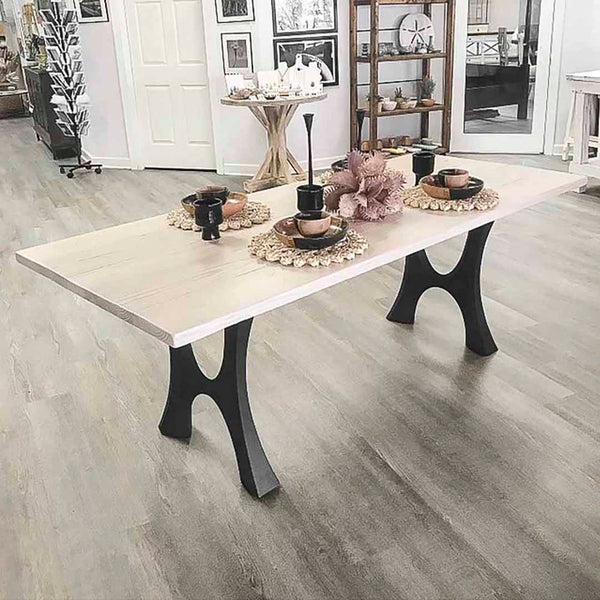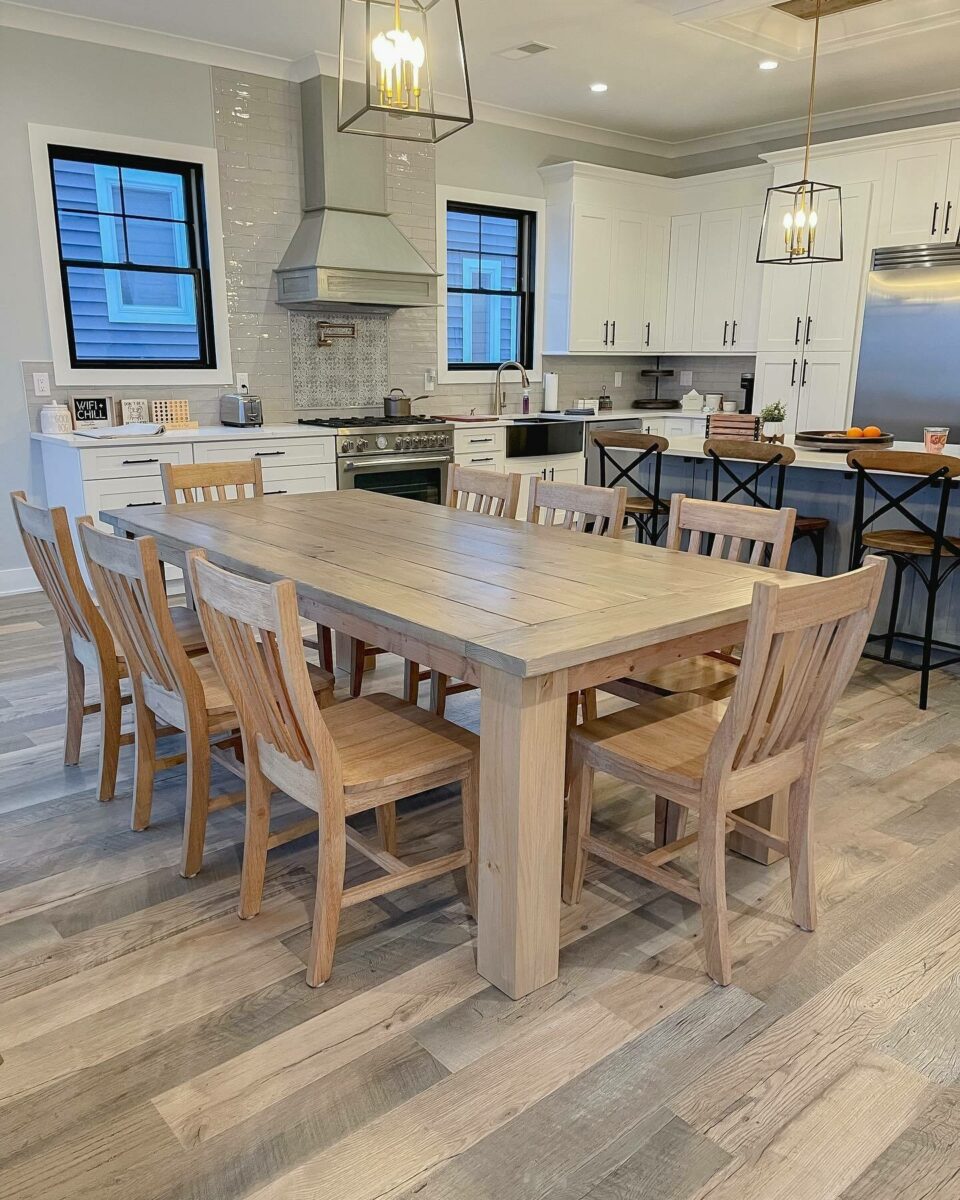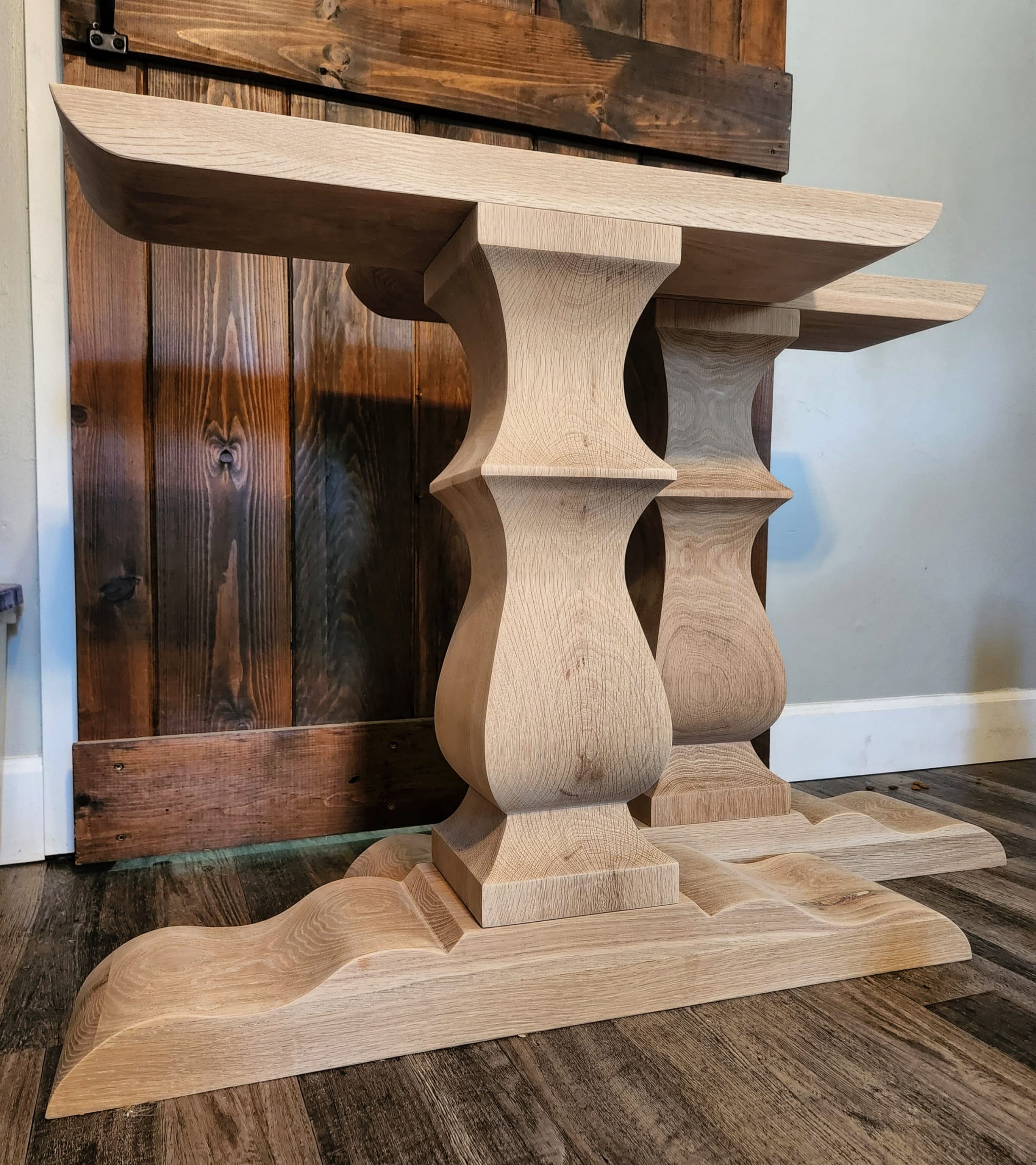Boost Your Dining Room with Sophisticated Dining Table Legs Wood Designs
Boost Your Dining Room with Sophisticated Dining Table Legs Wood Designs
Blog Article
Exploring the Various Sorts Of Dining Table Legs Timber for Your Eating Area
The option of dining table legs timber can profoundly influence both the functional and aesthetic top qualities of your dining area. Strong timber options, such as oak and walnut, provide a timeless appearance with unequaled resilience, while crafted timber alternatives provide cutting-edge designs that imitate the splendor of all-natural grains.
Strong Wood Options

Unlike engineered materials, solid wood is much less vulnerable to bending and damages over time when appropriately kept. Each item of strong wood is distinct, showcasing private attributes that include to the appeal and personality of the eating table.
Furthermore, strong timber can be ended up in countless methods, varying from natural oils to tarnished finishes, allowing property owners to personalize their furniture to match their decor. In summary, selecting solid timber for eating table legs not only guarantees structural honesty yet additionally boosts the visual allure of the eating location, making it a beneficial financial investment for any type of home.
Engineered Timber Alternatives

Plywood, built from multiple layers of wood veneer, is stable and specifically solid, making it an excellent choice for dining table legs. Its split structure enables it to withstand changes in humidity and temperature much better than typical strong timber. MDF, on the various other hand, supplies a smooth surface for painting or veneering, enabling designers to attain a refined look while keeping structural stability.
Particleboard, typically utilized in economical choices, provides respectable toughness and is light-weight, making it much easier to manage. It might not be as durable as plywood or MDF. It is essential to think about the intended use and preferred aesthetic when choosing crafted wood alternatives. These products not just improve the performance of eating spaces however additionally enable higher layout adaptability, making sure that modern and traditional designs can coexist harmoniously.
Reclaimed Timber Includes
Redeemed timber supplies an unique blend of sustainability and personality, making it a progressively prominent option for dining table legs. Sourced from old barns, factories, and other structures, reclaimed wood embodies a history that new products merely can not reproduce. Each item carries its own tale, noted by distinctive flaws, knots, and varying grain patterns, which contribute to a table's unique aesthetic allure.
Along with its aesthetic appeal, reclaimed wood is an eco pleasant alternative. By repurposing formerly utilized products, it reduces the need for brand-new lumber, thus helping to lessen and conserve woodlands waste. This aligns with a growing customer preference for lasting practices in furnishings.
Additionally, recovered wood is commonly a lot more long lasting than freshly collected wood because of its age. The natural drying out process that redeemed wood undergoes outcomes in a denser and more powerful material, making it less prone to bending and splitting. This boosts the longevity of eating tables, allowing them to endure the rigors of day-to-day usage.
Softwood vs. Wood
When choosing eating table legs, understanding the click here to find out more differences between softwood and hardwood is critical for achieving both practical and visual objectives. They commonly exhibit a more rustic appearance, making them suitable for laid-back or country-style eating rooms.
On the various other hand, woods, sourced from deciduous trees like maple, cherry, and oak, are renowned for their thickness, toughness, and resilience. The intricate grain patterns and rich shades of woods give a sophisticated and timeless appeal, making them optimal for formal dining settings. While hardwoods tend to be a lot more pricey and larger, their strength against wear and tear frequently justifies the investment.
Ultimately, the option between softwood and wood for eating table legs need to line up with your layout vision, use requirements, and budget plan, guaranteeing that your dining space mirrors your individual style while staying functional over time.

Treatments and surfaces
The aesthetic appeal and longevity of table legs can be dramatically enhanced with different surfaces and therapies. These processes not only safeguard the wood from damage however likewise elevate its appearance, permitting it to enhance varied indoor styles.
One typical treatment is tarnishing, which penetrates the timber and boosts its all-natural grain while adding color. Discolorations give a rich, elegant appearance, making it possible for home owners to match their furniture with existing decor. Conversely, clear surfaces such as polyurethane or varnish produce a protective layer without modifying the timber's initial hue, ensuring resilience versus deterioration.
Additionally, all-natural oils, like tung or linseed oil, nurture the timber and use a subtle luster, all while being green. These oils permit the surface to take a breath, protecting against wetness buildup and prospective bending.
For those looking for a rustic appeal, distressed or weathered surfaces can be applied to develop an aged appearance, adding personality to the item. Ultimately, the selection of surfaces and treatments depends upon individual preference, wanted visual appeals, and the details wood kind, making it necessary to think about these variables when selecting eating table legs for your space.
Conclusion
Strong timbers, crafted alternatives, and recovered choices each deal unique advantages, catering to different choices and demands. Ultimately, the choice of wood type must straighten with from this source wanted design, toughness, and ecological considerations, improving the general eating experience.
The option of dining table legs wood can exceptionally affect both the aesthetic and practical qualities of your dining room - Dining Table Legs Wood. Strong see page timber choices, such as oak and walnut, offer a traditional look with unequaled durability, while engineered timber options supply ingenious styles that imitate the richness of natural grains. Solid wood offers a classic top quality that can boost the total style of an eating room. Each piece of solid wood is one-of-a-kind, showcasing specific attributes that include to the charm and personality of the dining table
Moreover, recovered timber is commonly much more sturdy than freshly gathered timber due to its age.
Report this page